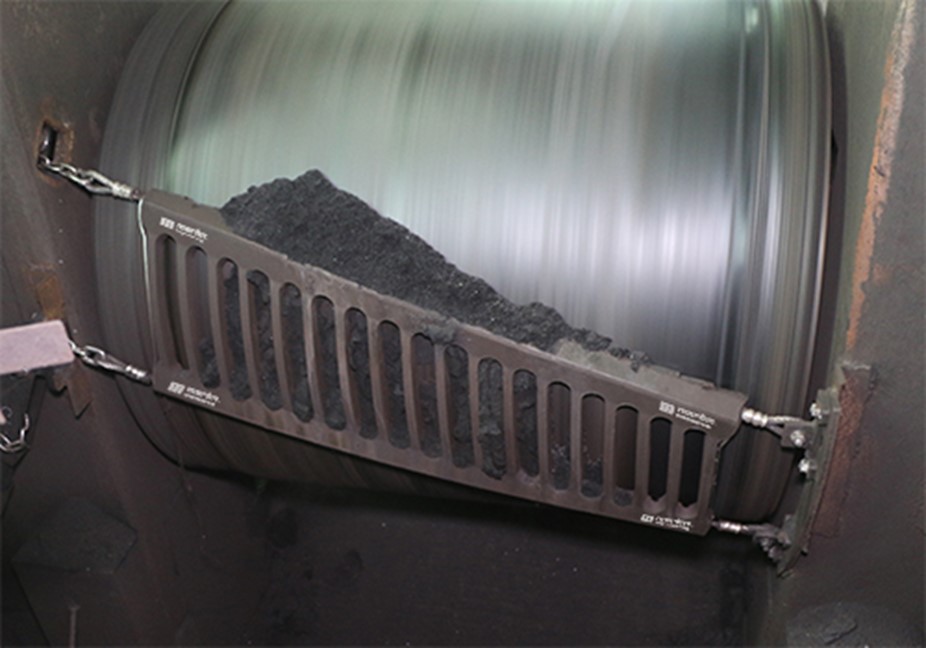The design and function of belt cleaners have come a long way. In the past, belt cleaners were rigid, linear pieces of hardware made out of various materials from brick to plastic that earned the name “scrapers” or “wipers” because that is what they did. They had a low operational life, broke or cracked frequently and contributed significantly to belt wear, Todd Swinderman, President Emeritus, Martin Engineering, says.
Modern primary cleaners are usually mounted at the head pulley and made from engineered polyurethane. This specially formulated material is forgiving to the belt and splice, but still highly effective for dislodging cargo, according to Swinderman. Typically supported by mechanical or pneumatic tensioners, the designs require significantly less monitoring and maintenance of blade tension.
Some primary cleaner designs require no tensioning at all after initial installation. The single primary cleaner strips feature a matrix of tungsten carbide scrapers installed diagonally to form a three-dimensional curve around the head pulley and typically delivers up to four times the service life of urethane cleaners without ever needing re-tensioning, he claims.
As conveyor speeds and cargo volumes increase to meet production demands, secondary belt scrapers are often installed immediately after the belt leaves the head pulley to address dust and fines that escape the primary cleaner. Generally equipped with spring or air tensioners that easily adjust to fluctuations in the belt, secondary cleaners are particularly efficient for applications that produce wet, tacky or dusty carryback, Swinderman says.
Some innovative secondary cleaners take a different approach from the standard secondary cleaner. They feature independent 6-in (152 mm) wide blades with carbide tips set on a stainless steel assembly. Each tip is supported on spring-loaded arms at both ends with a wide range of motion that provides equal load pressure across each blade and requires less tensioning over its lifespan. This design absorbs obstructions, responds to belt fluctuations and is able to arc safely in the event of a belt rollback.
Innovations in both blade design and tensioner engineering have improved cleaning ability, increased equipment life, reduced the need for tensioning and blade changes, and decreased labour for maintenance and clean up. Along with lowering the cost of operation, the most noticeable change is less dust along the belt path and in work areas. This improves employee morale and retention and results in better compliance, Swinderman concludes.











